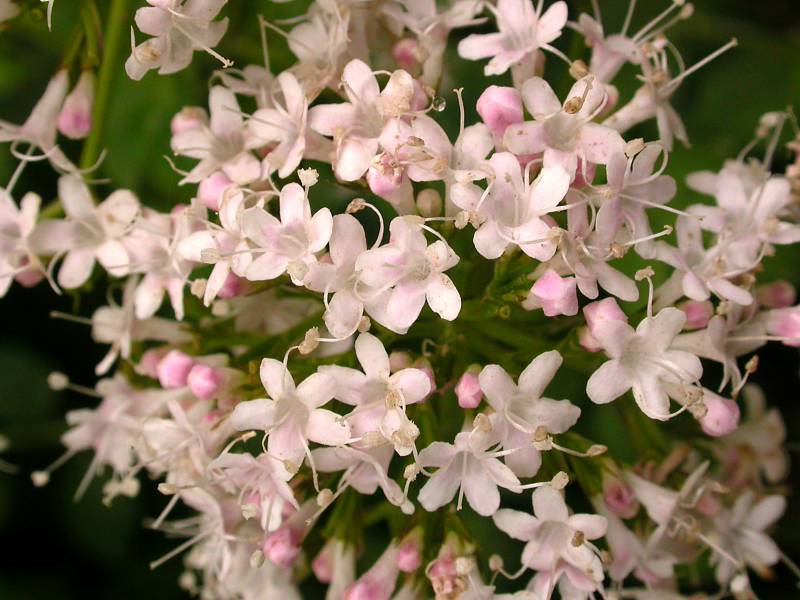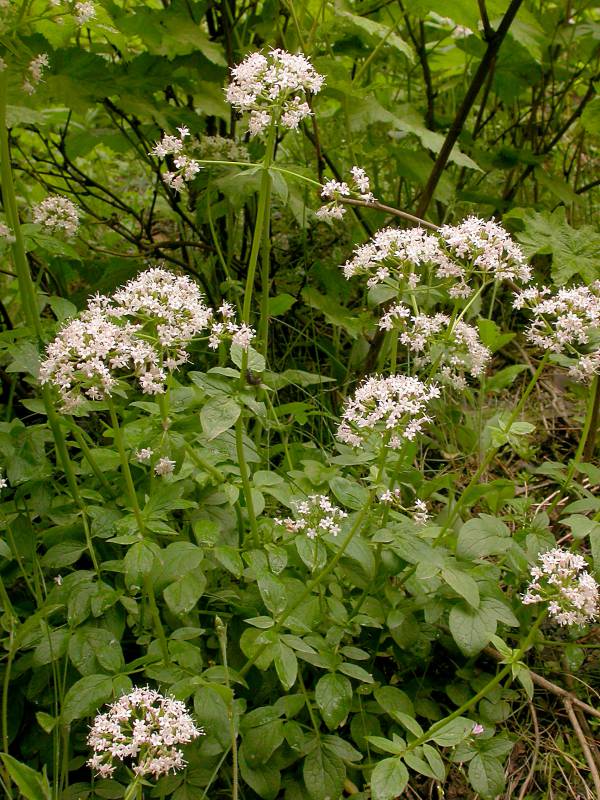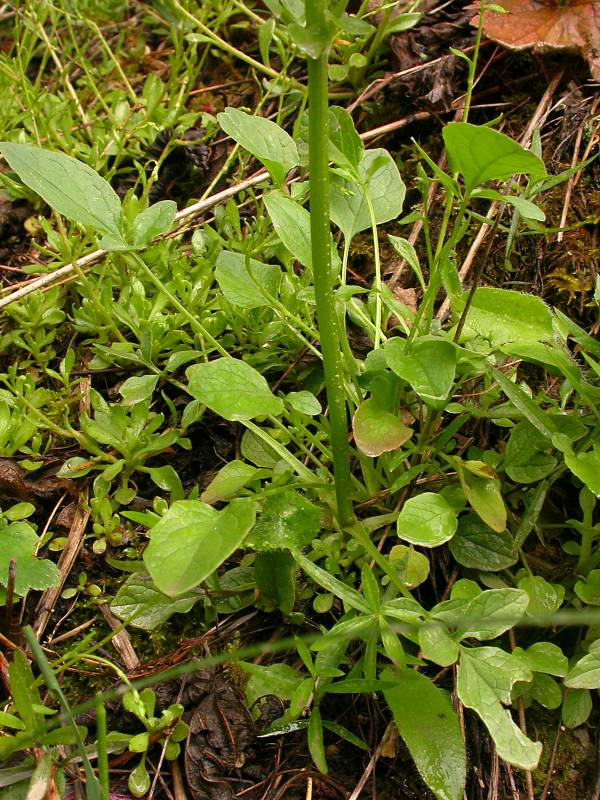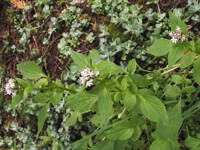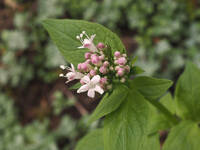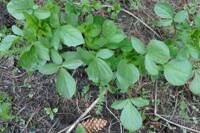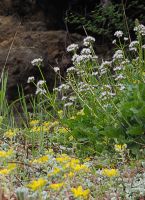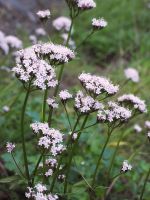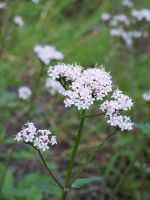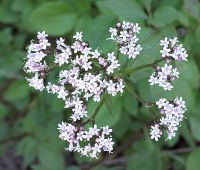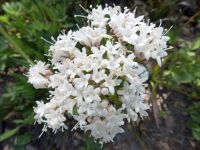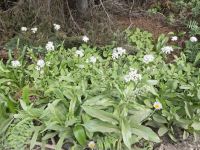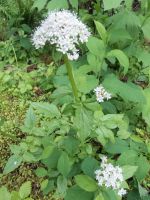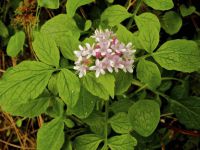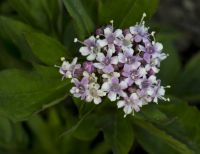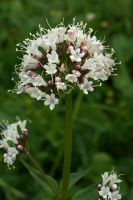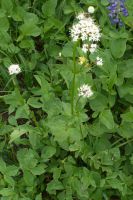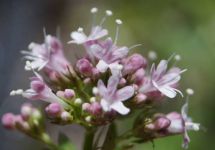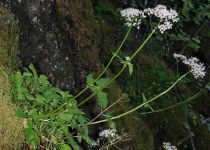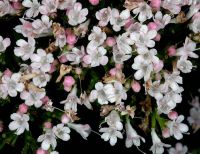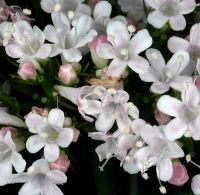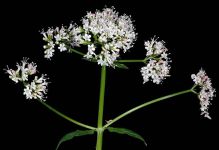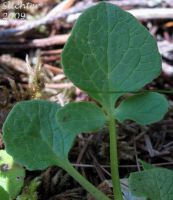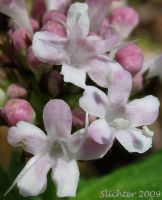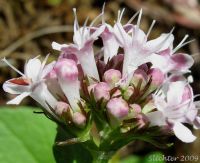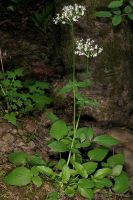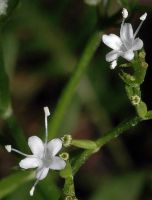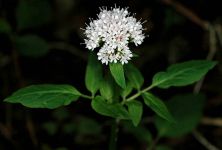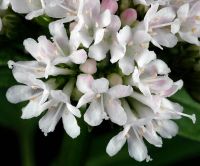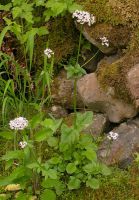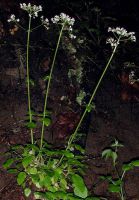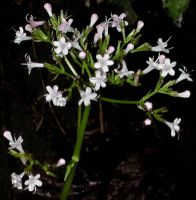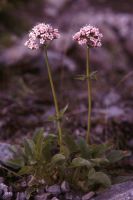Distribution: Occurring chiefly west of the Cascades crest in Washington; British Columbia to California
Habitat: Wet meadows and moist woods, sea level to mid-elevations in the mountains
Flowers: April-July
Origin: Native
Growth Duration: Perennial
Conservation Status: Not of concern
Pollination: Bees, flies, sawflies
Fibrous-rooted perennial from a stout, branched rhizome, the unbranched stem glabrous, 1.5-7 dm. tall.
Basal leaves well-developed, petiolate, mostly pinnatifid with enlarged, terminal segments up to 8 cm. long and 4 cm. wide, and 1-2 pairs of much smaller lateral segments; cauline leaves opposite, 2-4 pairs, short-petiolate, pinnatifid like the basal, but smaller.
Inflorescence compact, 2-7 cm. wide, expanded in fruit; flowers all perfect; calyx enlarging and spreading, with 12-18 plumose, bristle-like segments; corolla united, white or pinkish, 5-9 mm. long, the 5 lobes less than half as long as the tube; stamens 3, well exerted; ovary inferior, with two of the three cells vestigial.
Fruit an achene, 5-6 mm. long, lance-oblong, glabrous.
Publication: Mem. New York Bot. Gard. 1: 377. 1900.
Valeriana sitchensis Bong. var. scouleri (Rydb.) M.E. Jones
PNW Herbaria: Specimen records of Valeriana scouleri in the Consortium of Pacific Northwest Herbaria database
WA Flora Checklist: Valeriana scouleri checklist entry
OregonFlora: Valeriana scouleri information
E-Flora BC: Valeriana scouleri atlas page
CalPhotos: Valeriana scouleri photos

